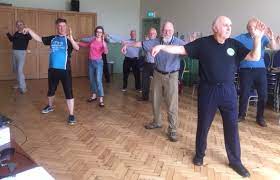Religiosity/Spirituality is Associated with Better Psychological Well-Being in Older Adults
By John M. de Castro, Ph.D.
“Both religion and spirituality can have a positive impact on mental health. . . Both religion and spirituality can help a person tolerate stress by generating peace, purpose and forgiveness.” – Luna Greenstein
Spirituality is defined as “one’s personal affirmation of and relationship to a higher power or to the sacred. Spirituality has been promulgated as a solution to the challenges of life both in a transcendent sense and in a practical sense. There have been a number of studies of the influence of spirituality on the physical and psychological well-being of practitioners mostly showing positive benefits, with spirituality encouraging personal growth and mental health. The research evidence has been accumulating. So, it makes sense to pause and summarize what has been learned.
In today’s Research News article “Religiosity/Spirituality and Mental Health in Older Adults: A Systematic Review and Meta-Analysis of Observational Studies.” (See summary below or view the full text of the study at: https://www.ncbi.nlm.nih.gov/pmc/articles/PMC9133607/ ) Coelho-Júnior and colleagues review, summarize, and perform a meta-analysis of the relationship of spirituality and religiosity with the mental health of older adults. They identified 62 published research studies with participants over the age of 60.
They report that the published studies found that religiosity/spirituality was associated with significantly lower levels of anxiety, depression, and fear of death and significantly higher levels of overall psychological well-being, satisfaction with life, meaning in life, and social relations. These findings are correlative so causation cannot be determined.
But it is clear the older people who are religious and/or spiritual are psychologically healthier.
“religious people live longer, on average, than non-religious people.” – Jeff Levin
CMCS – Center for Mindfulness and Contemplative Studies
This and other Contemplative Studies posts are also available on Twitter @MindfulResearch
Study Summary
Coelho-Júnior, H. J., Calvani, R., Panza, F., Allegri, R. F., Picca, A., Marzetti, E., & Alves, V. P. (2022). Religiosity/Spirituality and Mental Health in Older Adults: A Systematic Review and Meta-Analysis of Observational Studies. Frontiers in Medicine, 9, 877213. https://doi.org/10.3389/fmed.2022.877213
Abstract
Objectives
The present study investigated the association between religious and spiritual (RS) practices with the prevalence, severity, and incidence of mental health problems in older adults.
Methods
We conducted a systematic review and meta-analysis of cross-sectional and longitudinal studies that investigated older adults aged 60+ years and assessed RS using valid scales and questions from valid scales, and mental health according to validated multidimensional or specific instruments. Studies were retrieved from MEDLINE, LILACS, SCOPUS, CINAHL, and AgeLine databases until July 31, 2021. The risk of bias was evaluated using the Newcastle-Ottawa Quality Assessment Scale (NOS). A pooled effect size was calculated based on the log odds ratio (OR) and Z-scores. This study is registered on PROSPERO.
Results
One hundred and two studies that investigated 79.918 community-dwellers, hospitalized, and institutionalized older adults were included. Results indicated that high RS was negatively associated with anxiety and depressive symptoms, while a positive association was observed with life satisfaction, meaning in life, social relations, and psychological well-being. Specifically, people with high spirituality, intrinsic religiosity, and religious affiliation had a lower prevalence of depressive symptoms. In relation to longitudinal analysis, most studies supported that high RS levels were associated with a lower incidence of depressive symptoms and fear of death, as well as better mental health status.
Conclusion
Findings of the present study suggest that RS are significantly associated with mental health in older adults. People with high RS levels had a lower prevalence of anxiety and depressive symptoms, as well as reported greater life satisfaction and psychological well-being, better social relations, and more definite meaning in life. Data provided by an increasing number of longitudinal studies have supported most of these findings.
https://www.ncbi.nlm.nih.gov/pmc/articles/PMC9133607/









